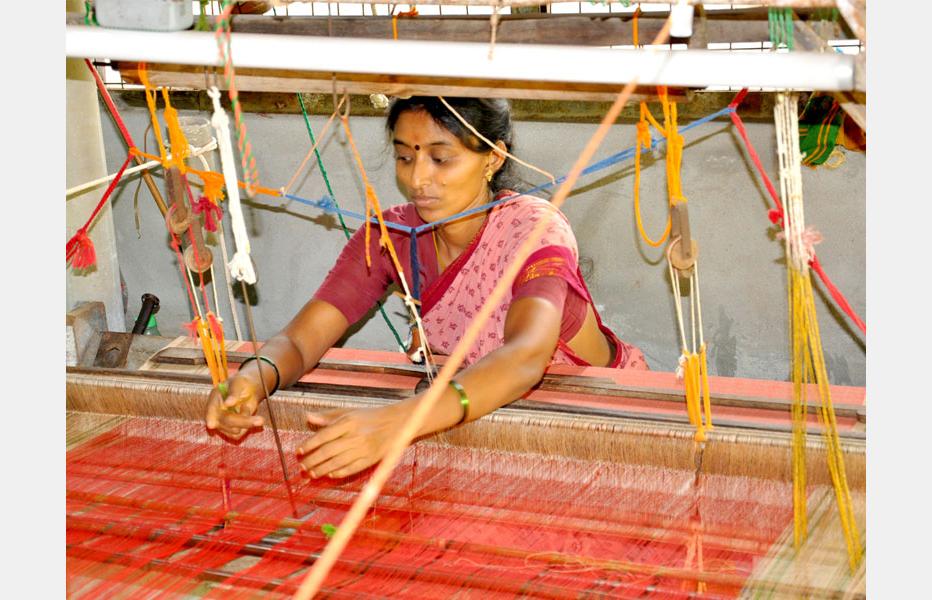KADANGEE SAREES

- A distinctive feature of Kandangi sarees is the "temple border," a wide and ornate border that runs along the length of the saree. The temple border typically features traditional motifs and designs
- These sarees are meticulously handwoven by skilled artisans in the Chettinad region, which is known for its rich textile heritage
- They are often worn at traditional South Indian events and ceremonies, including weddings and festivals
- Kandangi sarees are an integral part of the cultural heritage of the Chettinad region and are considered an important traditional attire
- Kandangi sarees feature intricate and traditional designs that are handwoven into the fabric. The designs often include motifs like peacocks, geometric patterns, and floral elements
- A Geographical Indication (GI) is a label that is applied to products that have a specific geographical origin and that have characteristics related to that particular location.
- For Example, a GI tag for Amroha Dholak indicates that the dholaks must be made in Amroha, Uttar Pradesh, using traditional methods and materials.
3.1.. Importance of GI Tag
- GI tags are important because they help to produce the reputation and authenticity of products from a particular region.
- They also help to promote fair trade and sustainable practices. In the case of the seven products from Uttar Pradesh that have received GI tags, these tags will help to ensure that these products are made using traditional methods and that they are of high quality.
- This will benefit the artisans who make these products and it will also help to preserve the unique cultural heritage of Uttar Pradesh.
|
For Prelims: Geographical Indication Tag, Uttar Pradesh, Amroha Dholak, Mahoba Gaura Patthar Hastashlip, Manipuri Tarkashi, Sambhal Horn Craft, Baghpat Home Furnishings, Barabanki Handloom Product, Kalpi Handmade Paper,
For Mains:
1. Discuss the potential economic and cultural benefits of obtaining GI tags for regional products in terms of enhancing their market value and preserving traditional knowledge. (250 Words)
|
|
Previous Year Questions 1. Which of the following has/have been accorded 'Geographical Indication' status? (UPSC 2015) 1. Banaras Brocades and Sarees
2. Rajasthani Daal-Bati-Churma
3. Tirupathi Laddu
Select the correct answer using the code given below.
A. 1 only B. 2 and 3 only C. 1 and 3 only D. 1, 2 and 3 Answer: C
2. India enacted The Geographical Indications of Goods (Registration and Protection) Act, 1999 in order to comply with the obligations to (UPSC 2018)
A. ILO B. IMF C. UNCTAD D. WTO
Answer: D
3. On the basis of 'one district one product' programme in Uttar Pradesh, which one of the following pairs is NOT correctly matched? (UPPSC Combined State Exam 2022)
A. Gautam Buddh Nagar - Readymade Garments
B. Amethi - Moonz Products
C. Agra - Leather Products
D. Baghpat - Wooden Toys
Answer: D
4. In which of the following states was the Monpa handmade paper making unit inaugurated in December 2020? (SSC CHSL 2021)
A. Manipur B. Tripura C. Assam D. Arunachal Pradesh
Answer: D
|




